Issue 7 – Winter 2022
- News
- Giving more (Addleshaw Goddard)
- Innovation in Action (Clifford Chance)
- The future of law (Part I) TLT
- The future of law (Part II) (Simmons & Simmons)
- Offspring trumps Nakhoda (Linklaters)
- Features
- 60 seconds with Keith Hardie, MD Communications
- Is “new law” old hat?
- Branding technology and innovation: too beige?
- That's a good idea
- About
- Read our new report
- How can we help
- View our credentials
- Contact us

News and Views on branding tech and innovation by law firms
News
New brands and refreshed ones.
In the past year, firms have been busy restructuring their offerings. Several have sharpened their positioning and messaging. Here are a few examples:
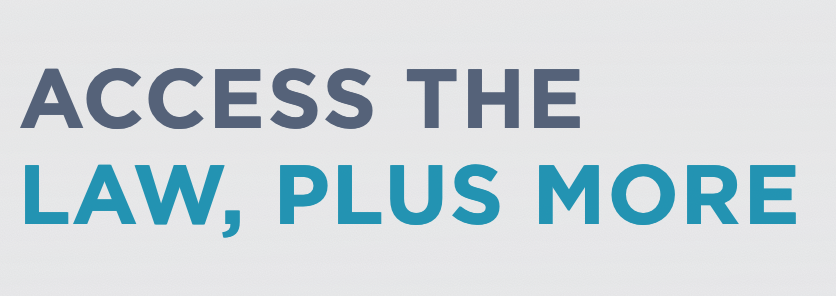
Giving more
Addleshaw Goddard (AG) has abandoned its claim of ‘Intelligent Delivery’ in favour of ‘Law, Plus More’. Armed with a new corporate proposition (‘More Imagination, More Impact’), the firm has restructured its messaging. It now talks about “combining legal, technology, resourcing and consultancy expertise to deliver more impact for clients”. The firm highlights how its clients are demanding “more” and, in response, how it offers an “integrated approach” to deliver efficiency and impact. Notably, AG illustrates this impact by highlighting how its work makes savings for clients (it is one of the few to feature this approach). Clearly it provides ‘more’ information!
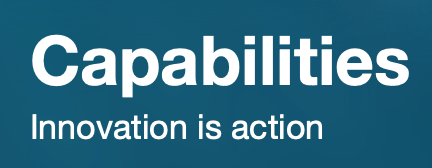
Innovation is Action
Clifford Chance too has scrapped its previous approach. ‘Create. Disrupt. Deliver’ is replaced by ‘Innovation is Action’ – its new top-line proposition. This speaks about the practicality of innovation, “proven by what we do, not what we say”. Like AG, the firm talks about its results. As part of its refresh, and presumably to help surface its new R&D hub, Clifford Chance has regrouped its activities into four distinct elements: innovation, insights, digital solutions and capabilities.
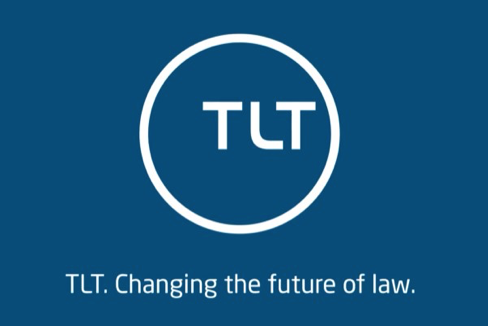
The future of law (Part I)
TLT has set out its stall on what the future of law is going to look like. The firm believes it’s all about taking an “aligned, integrated and indispensable approach”. ‘Discover FutureLaw’ is the firm’s new proposition for changing how it delivers legal services. The overarching promise unites a portfolio of four offerings, each using the corporate name for endorsement (TLT Applied for managed legal services, TLT LegalSifter for AI contract review, TLT One for document management and TLT Intelligent Drafting for drafting solutions).

The future of law (Part II).
Simmons & Simmons also talks of “the future of law” and claims to be building a “next-generation law firm”. The firm prides itself on “stepping outside the traditional legal approach” to “open up new possibilities for our clients, every single day”. Using the term ‘Solutions’ to package its range of capabilities (Adaptive Flexible Resourcing, eDiscovery, New Business, Service Excellence, Simmons Wavelength, and Products), the firm has been busy building products, from Rocketeer to CtrlTransfer, MiFID2 Tracker to SMCR toolkit. Its dashboard presents a bewildering 37 tools! Perhaps “the future” will see it also create a group of product families.
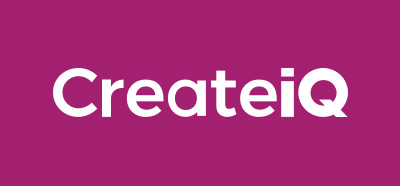
Offspring trumps Nakhoda
There’s been some brand one-upmanship at Linklaters. Nakhoda, the firm’s masterbrand for all things tech, was recently superseded by its flagship offspring CreateiQ, the contract negotiating platform. An apparent about-face saw Linklaters give “brand primacy” to CreateiQ: the firm now wants to scale up its contract automation tool “as both a product and brand”, leaving Nakhoda in the background. But building a brand takes time, effort and resources. One sure way to make quick progress is to leverage the firm’s famous purple in CreateiQ’s identity (as it is doing).

Features
60 seconds with Keith Hardie, MD Communications
One of the first senior marketing and communications leaders to work full-time within innovation when at BCLP Cubed. Now at MD Communications, we asked Keith to share his experiences working client side to champion innovation.
How does MD Communications support law firms?
We are a boutique marketing and communications consultancy with a global reputation, working in the legal and professional service sectors. We offer senior-level support: our consultants have more than 15 years of experience and bring a wealth of unique perspectives.
Speaking personally, I’ve worked in large corporates, led legal marketing teams, helped to drive legal innovation, and created several legal start-ups that have become multi-million pound a year businesses. Our depth and breadth of expertise helps our clients to resolve their challenges around communication and building stronger relationships.
At BCLP, you were one of the few legal marketers to work full-time in marketing and BD while in a legal innovation function. To help other marketers brand innovation, what lessons can you share?
The fact that I have so much experience in the marketing of innovation within law firms probably demonstrates I did something terrible in a previous life!
One lesson I’ve taken away is how important it is to track the end-to-end business development process, from generating a lead to winning work and building loyalty. In a start-up, this is the only way of establishing if there is demand for what you’re creating, and it links directly to concepts such as agile development and design thinking. SaaS (software as a service) companies have got this down to a fine art, but traditional law firms have a lot to learn.
Introducing this approach within a partnership isn’t easy but done well, it can enable more strategic conversations and can allow business development teams to focus on driving growth, rather than just on providing marketing materials.
A key part of selling tech is to support partners to have the right conversations. What techniques do you find useful in doing this?
The first thing to remember is that presenting to a room full of partners and expecting them all to change their behaviour immediately is not likely to work. Similar to shouting for help on a crowded street, you might get lucky, but generally everyone assumes someone else will provide assistance. Instead, identify individual partners to open doors to specific ‘early adopter’ clients, and understand why these clients might want your solution. You also need a robust process to track this and follow up.
Most partners are not comfortable asking clients questions that are outside of the matter they are working on. That lack of curiosity makes it hard to find clients for a new service. Innovators can bridge this gap by sharing with partners the best questions to ask and helping them understand how to find out more about their clients’ businesses, personal situations and individual goals. Once they understand these, they can spot opportunities much more easily.
At the moment, most firms use the masterbrand to package their ‘new law’ capabilities. In the next five years, will more firms spin out ‘new law’ services into standalone brands?
Legal innovators face a dilemma.
On the one hand, having lots of different brands adds marketing costs, confuses partners and dilutes messages externally. So a single, simple shorthand – a ‘masterbrand’ – makes sense. On the other, clients don’t want to know about a mix of techniques: they want solutions to problems, so it makes sense to launch products that focus on the outcomes, and those can be many and varied.
Some of the smarter firms I talk to are beginning to grapple with this dilemma. I suspect the best will recognise that the real challenge is to agree what the wider firm wants to be known for (which practices and services) and then focus on enhancing that positioning rather than create something separate. In the meantime, the risk is that new entrants, with brands that don’t have the ‘baggage’ of the existing business, will articulate more compelling propositions.
What are your top three tips for driving and embedding the innovation message internally?
If you are launching a new product or service, start by identifying clients who could be early adopters. Then put in a robust process for driving conversations with them. Putting this in place will require diplomacy, resilience, perseverance and, since most leads are likely to come from existing clients via partners, a good understanding of how partnerships work.
Second, connect innovation with the wider firm’s positioning. Studies show internal politics (not external factors or a lack of client demand) are most likely to kill innovation; that is even truer in law firms. If partners don’t feel your innovation helps them directly, they quickly lose interest or even see it as a threat, diverting resources away from their own areas, so showing how what you are doing enhances the wider firm’s offering is essential.
Third, connect with associates. Often, partners aren’t very open to suggestions for improvements but younger lawyers, who do much of the work, can be more curious about new ways of thinking. Helping them to understand process, data analytics and the power of new technologies can enable you to identify opportunities and achieve results more quickly.

Is “new law” old hat?
Could this be curtains for ‘new law’? PwC doesn’t seem to think so and is retaining NewLaw as the overarching name for its legal services and promise (‘Optimising your Legal Function’). But on the whole, law firms seem to be ditching the phrase. Only Ashurst and Norton Rose Fulbright now use it to openly describe their capabilities. Others have abandoned the descriptor to position legal expertise and delivery as part-and-parcel of how modern law firms operate and clients consume.
Words such as “integrated” and “combine” are becoming popular (Ashurst speaks about being “fully integrated with our legal project matters experts” while Freshfields refers to the “combined power of people, process and tech”). Most firms talk holistically about innovation and legal technology, and how these drive efficiencies. But here’s the usual challenge: most firms have very similar propositions. Which firm wouldn’t claim to drive efficiencies?
To move away from “new law”, “driving efficiencies” and other omnibus phrases does require a bit of effort. From a branding perspective, a good starting point is to dig deep within a firm’s history, people, positioning and values to unearth enduring truths. A firm’s mindset, sector focus or geographical footprint could yield rich ideas that, creatively woven into narrative and communications, could charm partners and clients alike.
It can be hard work for a firm to overcome traditional perceptions, generate new understanding, and encourage those involved to engage with technology and innovation. There is so much noise competing for ear space. Yet when a firm does move away from the generic (“new law”) to a more meaningful, bespoke, and branded approach, it’s giving itself the best chance to build internal and external awareness, understanding and, ultimately, commitment.

Branding technology and innovation: too beige?
“Describe how do you want to be seen” is a question often asked in creative briefs. “We want to be seen as distinct” is the standard reply. This catch-all phrase may be intended to help direct creativity. It does so all too rarely. What might be distinct for one person is not at all distinct for another.
Neither do analogies help. “We want to be the Tesla of the legal market” – really? So does everyone! Start-ups, unencumbered by associations and reputations, have the advantage. Law “companies” such as Elevate, Factor and United Lex can play with creative boundaries: most law firms can’t. Within the context of corporate law, Factor’s image is bold and adventurous in style and tone. This helps to reinforce its claims to be a disrupter in technology and innovation.
Law firms often find themselves saddled by history. They may be constrained by their positioning and brand identity. Most firms cannot push the creative envelope as far as newbies do (and as they might like). The shadow of corporate identity looms large over how they position an array of alternative services.
Conversely, unless a firm can widen its creative boundaries for corporate identity (and not many do), it’s likely to find that any rebrand of its technology and innovation offer falls victim to the curse of “beige”. So far, no law firms have managed to capture the spirit of technology (the vitality, vibrancy and boldness of the place where magic happens).
Law firms are innately conservative, but the world today is all about digital. Digital changes affect not just where and when a firm communicates, but how (animation, film, movement, look and feel, and editorial). Buyers are digital-centric, and creating a modern, bold design in this space is a must.
Look outside law for clues. Consider how businesses in other markets deeply affected by technology are branding themselves.
Firms talk about the future of law, building 2.0. This vision involves extending creative boundaries. Branding in the emerging digital universe of Meta will demand thinking that is unorthodox and outside-the-box. Be prepared!
That's a good idea
Perusing the legal landscape, we came across some firms promoting their innovation in interesting ways. Here are two:

Techtober (Eversheds Sutherland)
Following in the steps of Apple, Google and other giants, Eversheds Sutherland has taken over the month of October to promote tech within the firm. It held a series of training modules, interactive demos, client interactions and a global hackathon to provide all lawyers, firmwide, with an opportunity to learn about and develop hands-on skills in client-facing legal technology and legal service design. It’s surfaced innovation across the firm by running thought leadership activities: excellent for deepening and broadening engagement.

What the Tech! (Mills & Reeve)
Tech in your pocket! Mills & Reeve decided to create an easy-to-understand app to help guide its lawyers on the tech available to them and their clients. This app features content to aid client conversations covering the firm’s solutions and technologies, and easy-to-use enquiry forms. It won the Knowledge Management Innovation Award at Legal Week’s Innovation Awards.
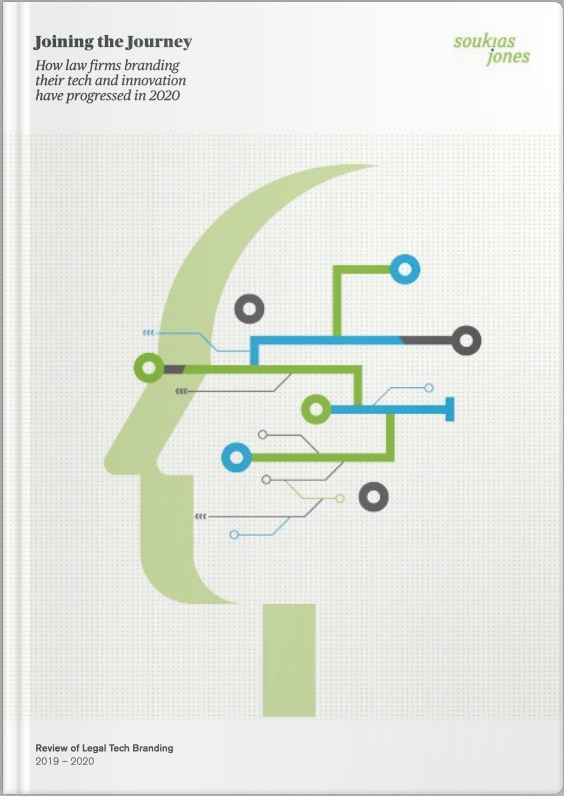
About
Read our new report
How law firms branding tech and innovation have progressed in 2020
Back in June 2019, we published our review ‘How law firms brand innovation and lawtech’. As 2020 closed, we decided to take another look at where firms are on their branding journey. We found:
- 60% of firms (Top 30 UK law firms) now use sub-branding to package their New Law solutions;
- 33% of firms include on their websites little or no reference to innovation and lawtech; and
- 66% of firms in the Top 30 to 60 have little or no reference to these on their websites.
For a free copy of our review ‘Joining the Journey: How law firms branding tech and innovation have progressed in 2020.’ Click here
How can we help
Click here to find out what we do and how we can help you brand tech and innovation.
Book a Strategy Call
Perhaps your existing strategy is underperforming and failing to deliver results. Do you need help branding your tech?
Set up a no-obligation call with our branding expert, Grahame Jones.


